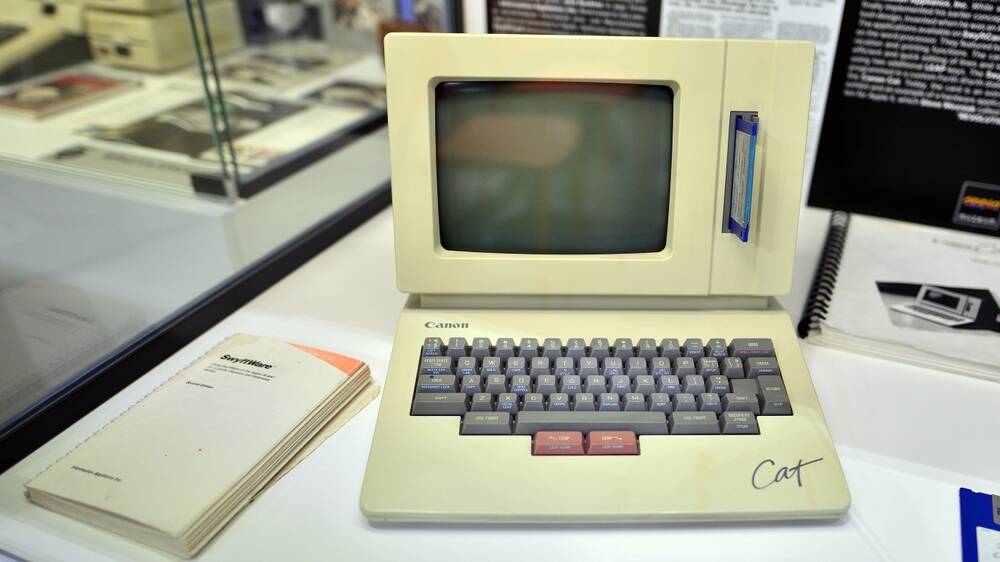Tech
The Canon Cat – remembering the computer that tried to banish mice

Feature Vintage systems guru Cameron Kaiser documents stripping down and fixing a Canon Cat – the most revolutionary computer you’ve never heard of.
The Old VCR blog – it’s short for Old Vintage Computing Research – is recommended reading, and the latest post features a deep dive into one of the most important, radical, and revolutionary – not to mention little-known – computers ever invented: the Canon Cat.
The Cat was designed by the late great Jef Raskin, and there’s a theory that he named it because cats famously chase mice… and he didn’t like the mouse-centric computer that Steve Jobs turned the Macintosh into, after Jobs took over the project, as we described in our 40th anniversary retrospective. Before Raskin joined Apple, he worked at Xerox PARC, and he’s the man who persuaded Jobs to make that legendary visit which resulted in the graphical interfaces of both the Lisa and the Mac.
The Macintosh computer started out as Raskin’s personal project and was named after his favorite variety of the fruit. However, what the Mac became was very different, so he left Apple, started his own company, Information Appliance, Inc. and designed a machine truer to his original vision, which was lated brought to market by word-processor manufacturer Canon.
The name Raskin gave his company came from the device he wanted to make: he envisioned an information applicance as small, simple and unthreatening as a toaster – much less complicated and forbidding than a computer. Part of the original idea was that it wouldn’t even have a power button: as he noted, appliances such as toasters or landline telephones don’t need power switches.
The Cat launched in 1987, the same year as Windows 2.0, OS/1 1.0, and the Macintosh II. Looking back from today, it’s hard to imagine how radical the device was back then. Raskin wanted to eliminate many of the ideas, inherited from 1970s-era, text-based computers, which dominated computing then and in many ways still do. The Cat had a graphical display, but no pointing device, and no clunky mainframe computer concepts like “programs”, or “files” and “folders”. It had no separate “modes” for giving commands: Raskin’s passion for modeless operation was shared by another of the Macintosh’s parents, Larry Tesler, famed as the inventor of the cut, copy and paste operations.
Using a Cat, you just typed text… but you could edit it, or enter a table of numbers and tell the computer to total or average them. It wasn’t just a word processor: its single program was also a spreadsheet. You could highlight some of the text on screen and format it, or tell the device to print just that part, or to send it over to another computer – because the Cat was one of the first computers to have a built-in modem to communicate over the telephone network.
Its software was implemented in the legendarily efficient Forth language (as also used in the far less radical Jupiter Ace home computer), and was designed to be extensible – if it had thrived and grown, owners could have purchased new functionality which would add new abilities to its single, all-encompassing onboard software. Kaiser goes into some detail about how the machine works, its processor and so on, which is fascinating reading for computer antiquarians.
The Cat is well worth exploring, and although Canon is estimated to have sold only 20,000 units or so, the sheer number of tribute sites to the machine, as well as research papers and so on, show that its influence exceeded its commercial success. There is lots of information on both CanonCat.org and CanonCat.net, including a colour brochure [PDF], the reference guide [PDF] and a research paper entitled the Work Processor [PDF]. There’s also a free online emulator of the machine. We like these retrospective essays, the forgotten 1987 alternate-reality Mac and the Canon Cat and the Mac that Steve Jobs killed.
Raskin’s book the Humane Interface: New Directions for designing Interactive Systems is widely recommended for UI designers, and is available on the Internet Archive. Before he succumbed to pancreatic cancer, the same disease that also took Steve Jobs, he designed a Windows editor and tool called Archy. A small offshoot that became FOSS is the Enso Launcher. ®
Bootnote
Dr Cameron Kaiser is also the remarkable mind behind the wonderful Secret Weapons of Commodore, a site we highly recommend if you want to lose a few hours. For some years he also maintained both the TenFourFox web browser, a port of modern Firefox back to PowerPC Mac OS X for those who didn’t want to switch to Intel Macs, as well as Classilla, which was the last Classic MacOS web browser in active maintenance.










